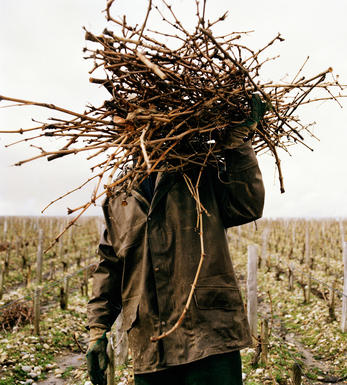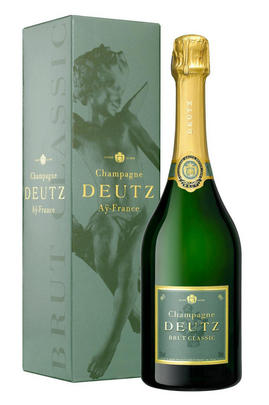
Critics reviews
Stephan Reinhardt - 30/11/2017
About this WINE

Deutz
Deutz are one of the grandest Champagne houses in the village of Ay, where they are near neighbours to Bollinger. Founded in 1838 and now under the discrete ownership of Maison Louis Roederer, their finely-crafted range is currently inspiring great critical acclaim, from their outstanding Classic range all the way up to the rare deluxe cuvées, William Deutz and the sublime Blanc de Blancs, Amour de Deutz, which is only released in the very best years. Along with Charles Heidsieck, Deutz is making the most exciting range of any of the Grandes Marques at the moment.

Brut Champagne
Brut denotes a dry style of Champagne (less than 15 grams per litre). Most Champagne is non-vintage, produced from a blend from different years. The non-vintage blend is always based predominately on wines made from the current harvest, enriched with aged wines (their proportion and age varies by brand) from earlier harvests, which impart an additional level of complexity to the end wine. Champagnes from a single vintage are labelled with the year reference and with the description Millésimé.
Non-vintage Champagnes can improve with short-term ageing (typically two to three years), while vintages can develop over much longer periods (five to 30 years). The most exquisite and often top-priced expression of a house’s style is referred to as Prestige Cuvée. Famous examples include Louis Roederer's Cristal, Moët & Chandon's Dom Pérignon, and Pol Roger's Cuvée Sir Winston Churchill.
Recommended Producers : Krug, Billecart Salmon, Pol Roger, Bollinger, Salon, Gosset, Pierre Péters, Ruinart

Champagne blend
Which grapes are included in the blend, and their proportion, is one of the key factors determining the style of most Champagnes. Three grapes are used - Pinot Noir, Chardonnay and Pinot Meunier.
26% of vineyards in Champagne are planted with Chardonnay and it performs best on the Côtes des Blancs and on the chalk slopes south of Epernay. It is relatively simple to grow, although it buds early and thus is susceptible to spring frosts. It produces lighter, fresher wines than those from Burgundy and gives finesse, fruit and elegance to the final blend. It is the sole grape in Blancs de Blancs, which are some of the richest long-lived Champagnes produced.
Pinot Noir accounts for nearly 40% of the plantings in Champagne and lies at the heart of most blends - it gives Champagne its body, structure, strength and grip. It is planted across Champagne and particularly so in the southern Aube district.
The final component is Pinot Meunier and this constitutes nearly 35% of the plantings. Its durability and resistance to spring frosts make the Marne Valley, a notorious frost pocket, its natural home. It ripens well in poor years and produces a soft, fruity style of wine that is ideal for blending with the more assertive flavours of Pinot Noir. Producers allege that Pinot Meunier lacks ageing potential, but this does not deter Krug from including around 15% of it in their final blends.



Buying options
Add to wishlist
Description
The house style at Deutz inclines towards the more elegant end of the spectrum as opposed to the rich and robust. The nose of the Brut Classic is definitely in keeping with the aforementioned profile; the fruit characteristics including peach, apricot and lemon zest, whilst the palate is full of biscuit and honey which, when combined with the exceptionally fine mousse, gives the wine great balance and poise.
wine at a glance
Delivery and quality guarantee